The superbly camouflaged Mallee Military Dragon (Ctenophorus fordi) in the Lyndhurst sand dunes.
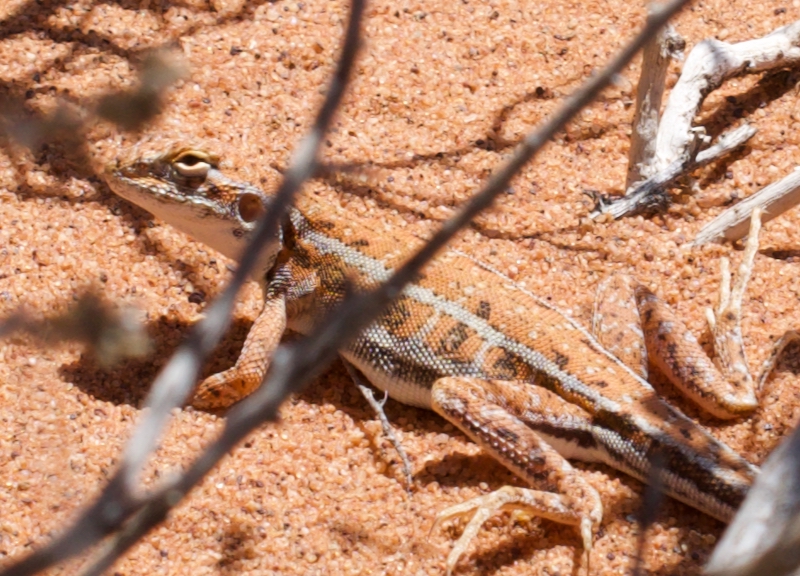
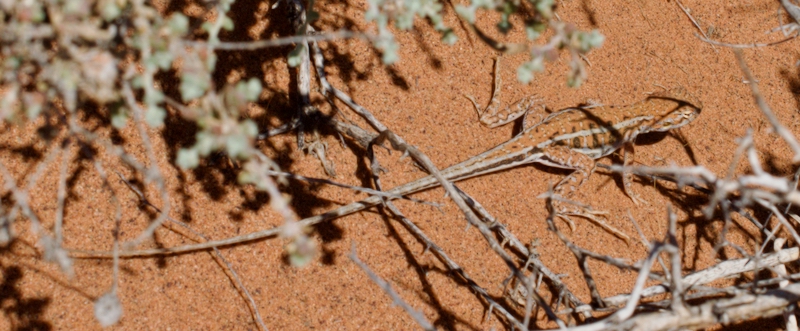
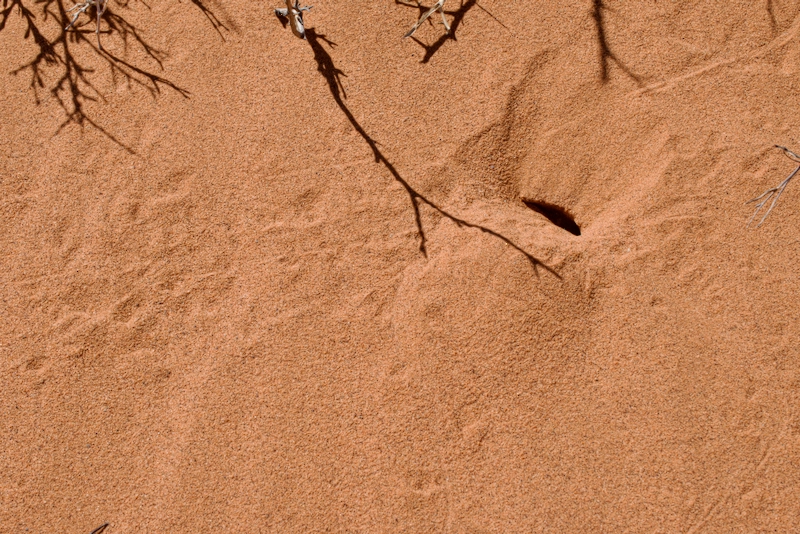
The superbly camouflaged Mallee Military Dragon (Ctenophorus fordi) in the Lyndhurst sand dunes.



Example of barite sand nodules in a Rawnsley Quartzite boulder formed in shallow water below the surface of the sand, with quartz grains cemented by barium sulphate later replaced by fine grained quartz to form lumps.


These two reptile scats, each about 10cm long, were deposited on sand in early spring, as reptiles began emerging from winter hibernation. Reptile scat is identifiable by feces with a white cap of uric acid and potassium salts – an adaptation for ejecting nitrogenous wastes without the need to expel fluids through urination. The diet of this reptile, likely a goanna, appears to be insectivorous.


Koch’s Pigface (Gunniopsis kochii) is a compact succulent, indigenous to SA but near threatened in the Flinders Ranges. Flowering in early spring in sand near Lyndhurst.


Loose-flowered Rattlepod (Crotalaria eremaea) growing to about 1m in the sand dunes of Lyndhurst and flowering in the early spring.

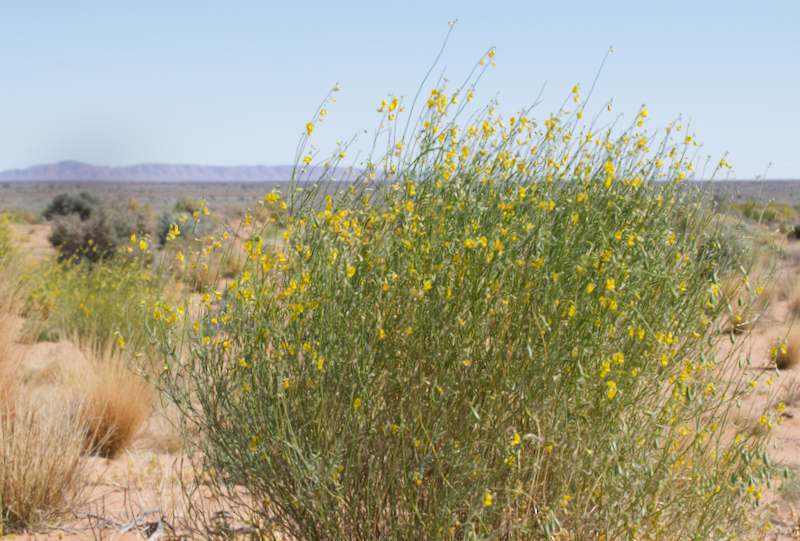
Mallee Goodenia (Goodenia fascicularis) flowering in the sand dunes at Lyndhurst, early spring.
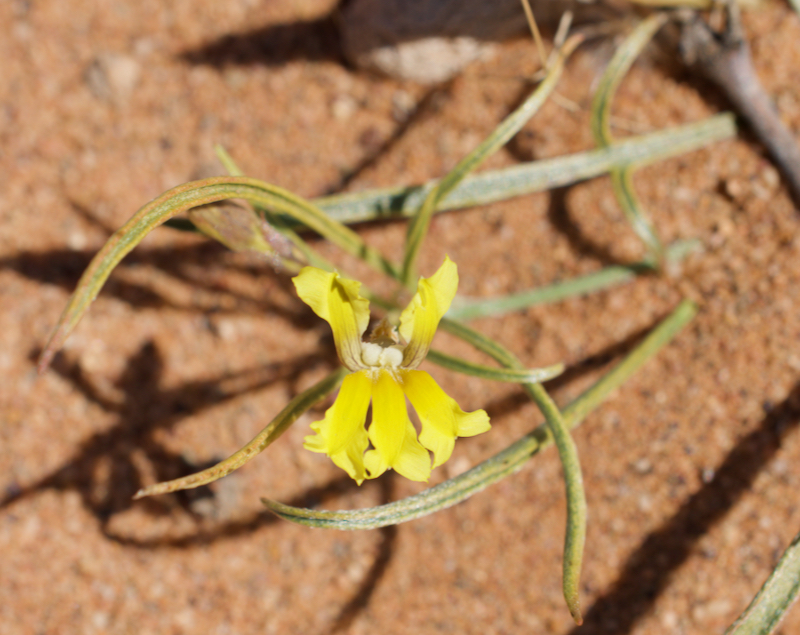
Sclerolaena tatei fruiting in sand near Lyndhurst in early spring.
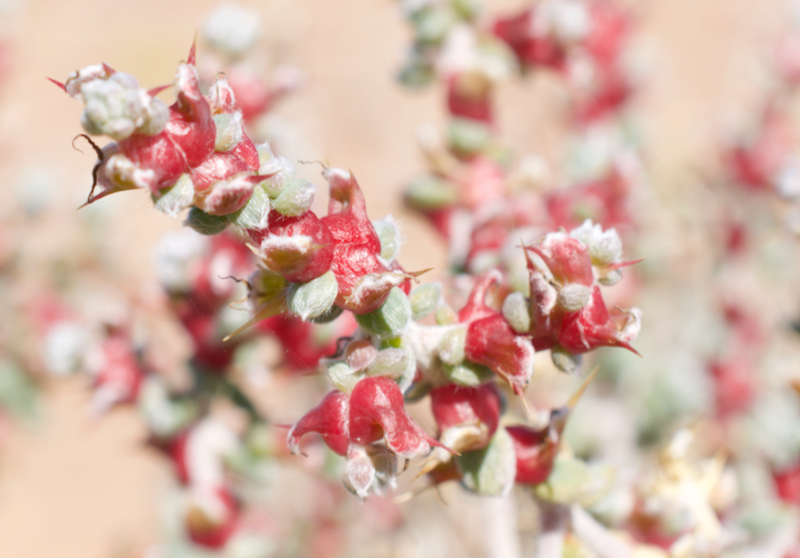
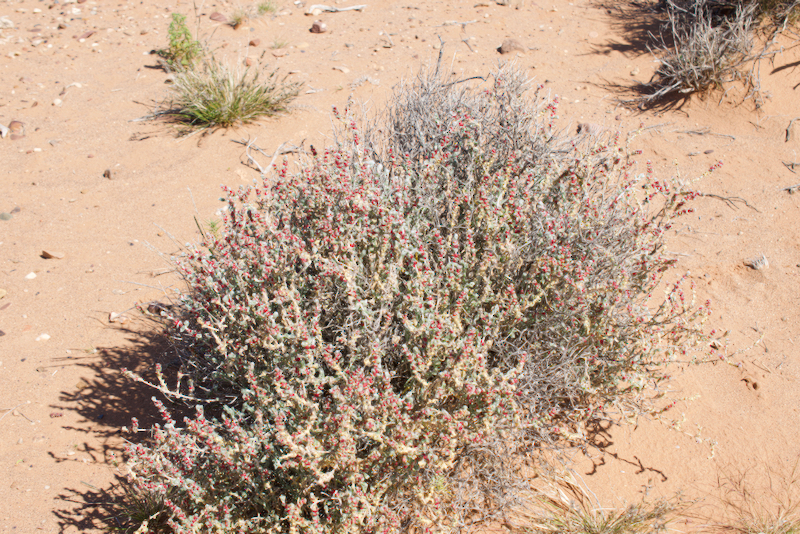
Mt Neill Granite (1580ma) sand with biotite, blue quartz, red feldspar, Arkaroola:

Quartz sand from Paralana Hot Springs, northern Arkaroola:


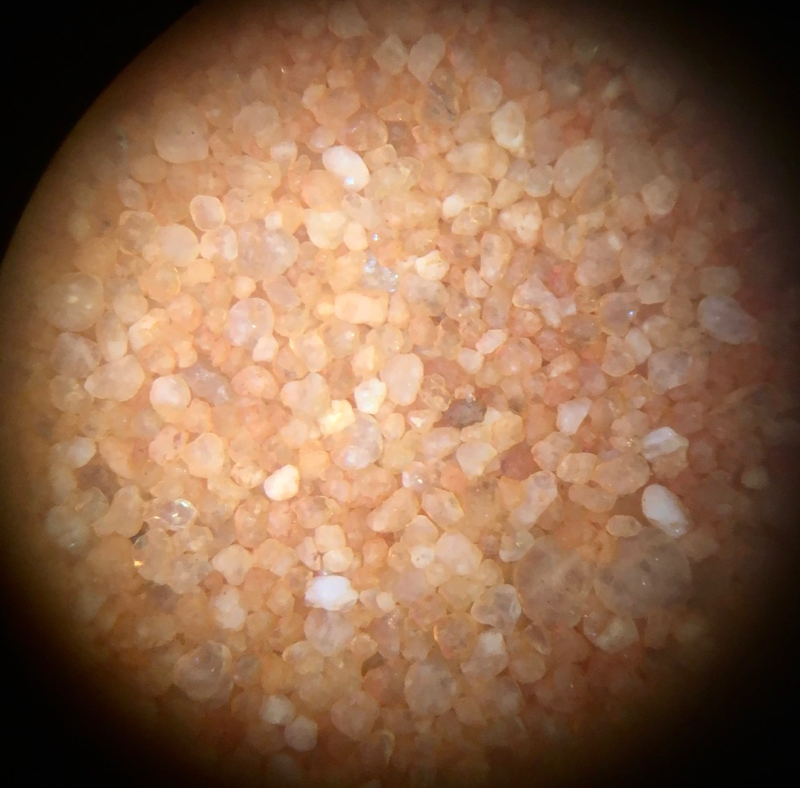 Sand from the red dunes in the plains to the west of Wilpena Pound, predominately hematite stained silica. Magnification 20x.
Sand from the red dunes in the plains to the west of Wilpena Pound, predominately hematite stained silica. Magnification 20x.
The hematite and magnetite rich magnetic sand of Yudnamutana.
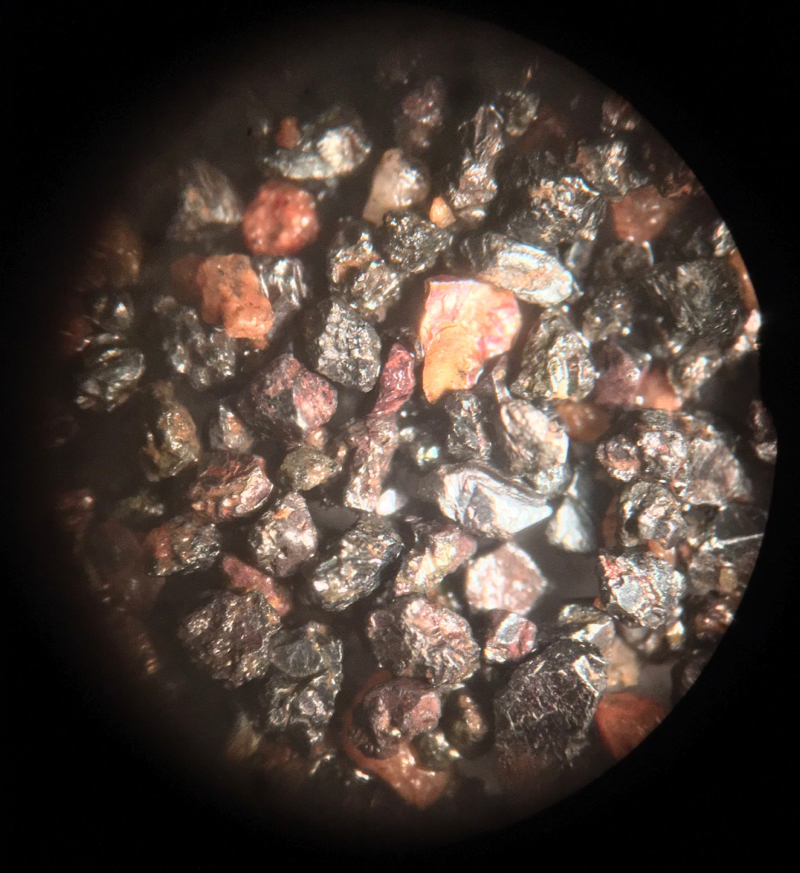 Magnification 20x.
Magnification 20x.